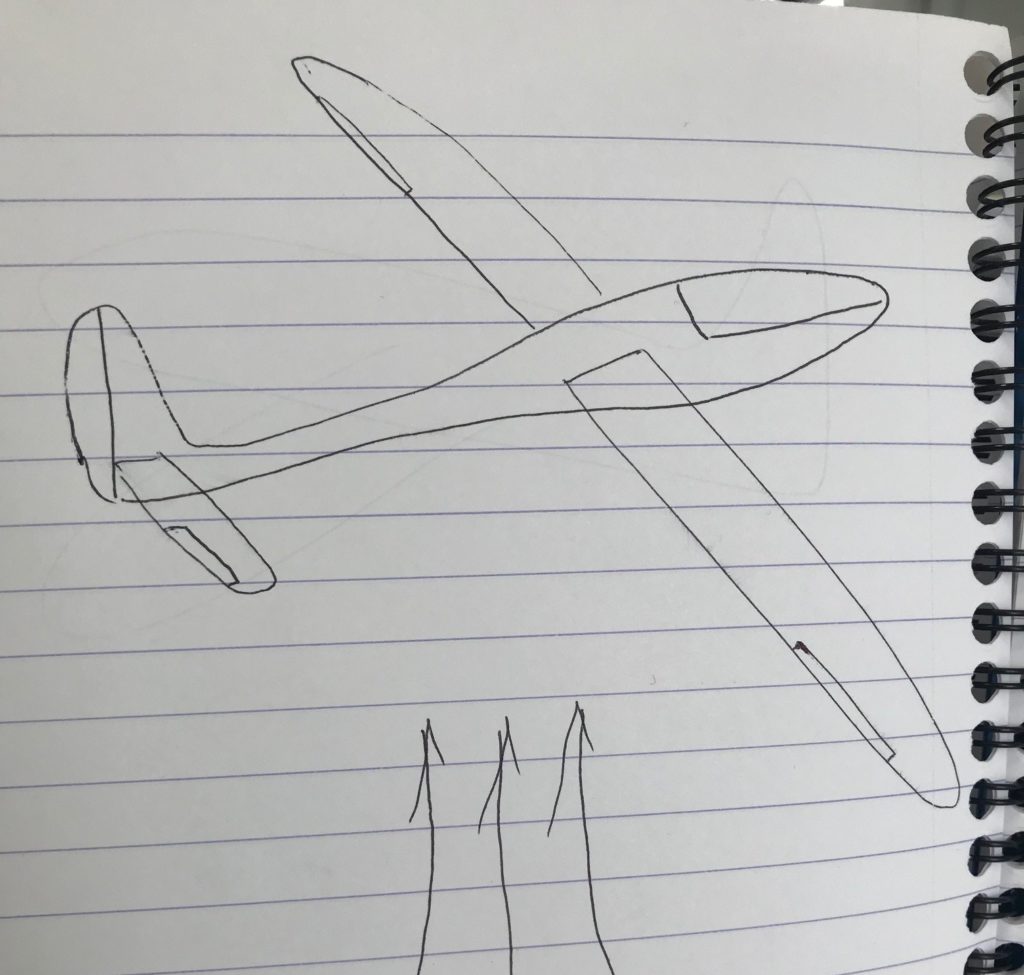What can gliding teach us about customer experience strategy?
One of my passions is gliding and the other day, when flying on a crisp autumn morning, I found myself contemplating how gliding and customer experience strategy have many parallels. And this led me to think about how brands could learn from this.
I will apologise now for the poor drawings but these were the scribbled notes I made to myself (not whilst flying, I hasten to add). Although not masterpieces, I hope they convey the principles.
So what are the parallels between gliding and customer experience?
Gliders require energy to stay in the air. This energy usually comes from air rising, either due to a thermal or air hitting a hill or ridge and being sent upwards. The result is, assuming the pilot is any good, that the plane gains height.

And this is similar to the relationship with a brand. A good customer experience tends to raise satisfaction, recommendation and loyalty.
However, gliders have a naturally tendency to descend to the ground. Some gliders will travel much further than others because they are more efficient at staying in the air, but the one thing they have in common is they ALL come to the ground in the end.
And here’s my second parallel. The relationship we have with a brand tends to run a natural course. Sometimes it’s a long time and sometimes it’s quite short lived. But like a glider without energy (the aforementioned air rising), without positive experiences, the customer journey is likely to be shorter than longer.
How can brands learn something about customer experience from gliding?
Many brands map their customer journeys and also track their performance at each touchpoint. But I wonder whether every brand thinks of these touch points as opportunities? Opportunities to ‘top up’ the customer experience beyond that expected. Thinking back to gliding, some thermals are strong and some are weak. The experienced pilot seeks out the strongest but on occasions needs to use the weaker thermals. Either way, the net result is hopefully a positive gain in height.
So my final parallel, and the lesson here, is that brands who use these touchpoints as positive ‘top up’ experiences can actually help maintain the relationship for longer, in the same way that a glider gains height with every positive thermal.
Brands should therefore review every touchpoint and use them to inject positive feeling to their customers. Just like gliding, around the corner there may be a lot of negative lift. The greater the positive energy you can provide during the relationship, the more chance you have of keeping customers loyal.